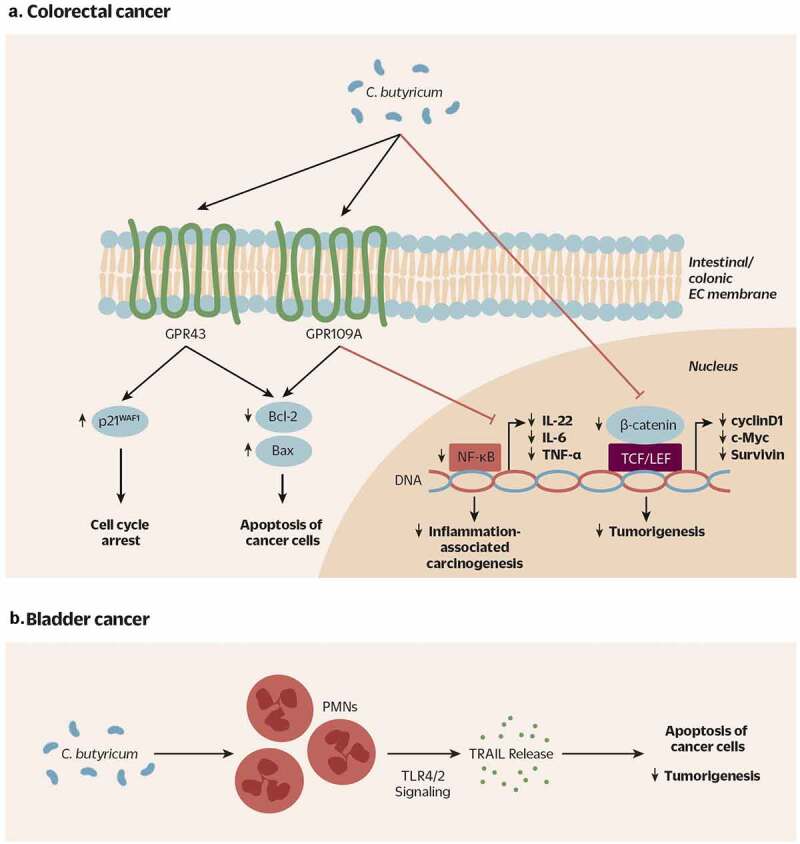Figure 6.

Proposed mechanism of action of beneficial C. butyricum strains across animal models of A) colorectal cancer (CRC) and B) bladder cancer. A) C. butyricum increases expression of SCFA receptors GPR43 and GPR109A in colonic and intestinal epithfiguelial cells. Activation of GPR43 eventually leads to an increased expression of p21WAF1 and cell cycle arrest in cancer cells. Again likely via activation of GPR43 and GPR109A, C. butyricum triggers a decrease in anti-apoptotic proteins Bcl-2, and an increase in pro-apoptotic protein Bax, resulting in the apoptosis of cancer cells. Moreover, C. butyricum inhibits NF-κB signaling (TLR4-MyD88-NF-κB) and decreases certain proinflammatory factors (IL-22, IL-6, TNF-ɑ), potentially leading to a decrease in inflammation-associated carcinogenesis. Finally, C. butyricum may also act to decrease CRC development by inhibiting the Wnt signaling pathway (β-catenin, cyclinD1, c-Myc, Survivin etc.). Cross-talk among these pathways is likely, but not yet fully elucidated. B) C. butyricum treatment of PMNs stimulates their release of TRAIL, a cytokine that specifically induces apoptosis in tumor cells
CRC: colorectal cancer; SCFA: short chain fatty acids; GPR43/109A: G-protein-coupled receptor 43/109A; EC: epithelial cell; Bcl2: B cell lymphoma 2; Bax: Bcl2 associated x protein; TLR4: Toll-like receptor 4; MyD88: Myeloid differentiation primary response 88; NF-κB: nuclear factor kappa-light-chain-enhancer of activated B cells; IL-22: interleukin-22; IL-6: interleukin-6; TNF-ɑ: tumor necrosis factor alpha; PMN: polymorphonuclear leukocyte; TRAIL: tumor necrosis factor-related apoptosis-inducing ligand
